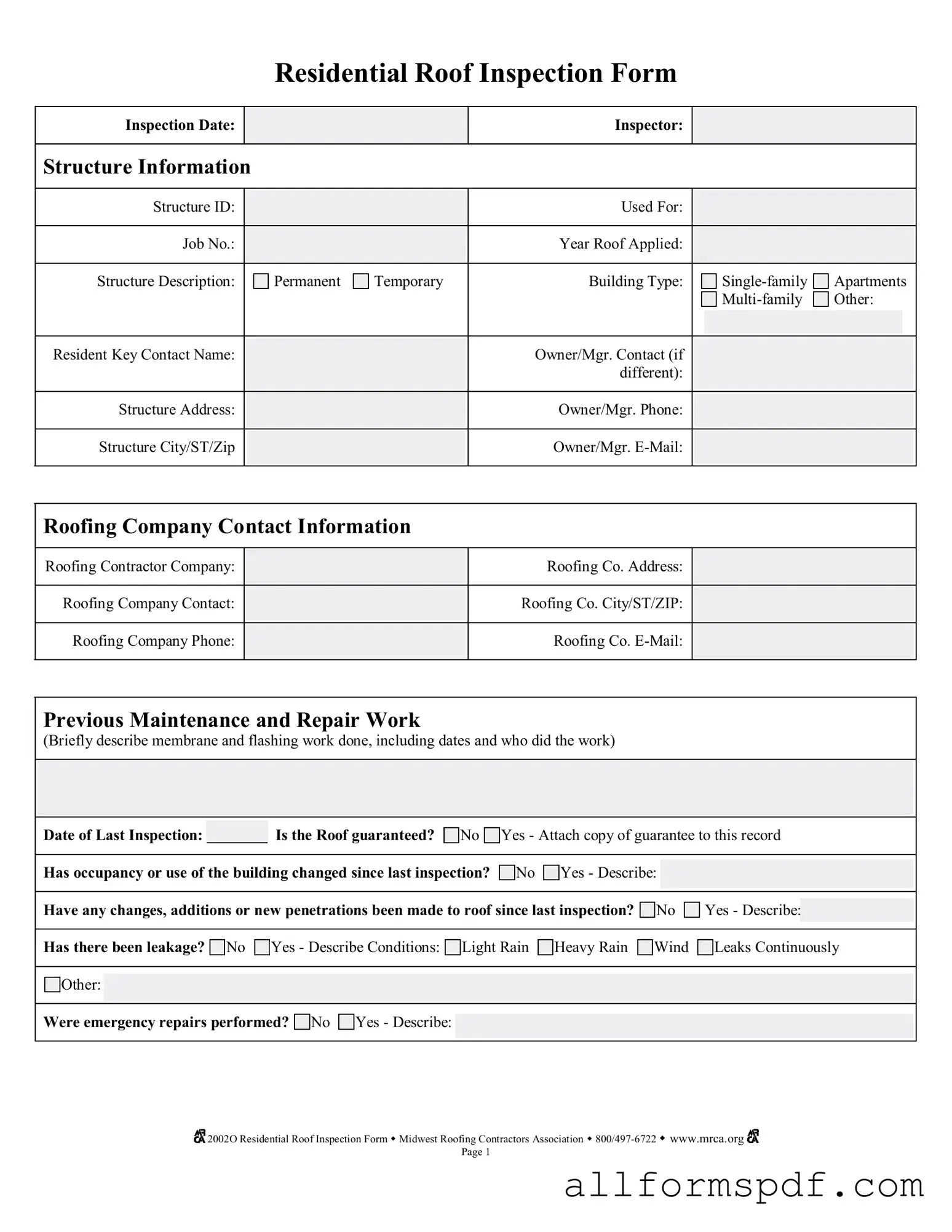When filling out the Roof Inspection form, individuals often make several common mistakes that can lead to incomplete or inaccurate assessments. One major error is failing to provide complete contact information. This includes the roofing contractor's details and the owner's contact information. Incomplete contact details can hinder communication and follow-up actions, creating delays in addressing any issues.
Another frequent mistake is not accurately describing the structure information. This section requires clear identification of the structure ID, its purpose, and the building type. Omitting or mislabeling this information can cause confusion and misinterpretation of the inspection results.
People also tend to overlook the section regarding previous maintenance and repair work. It is crucial to provide a brief description of any past work done on the roof, including dates and contractors involved. Missing this information can prevent inspectors from understanding the roof's history, which is vital for assessing its current condition.
Additionally, individuals often forget to indicate whether the roof is guaranteed. If there is a guarantee, attaching a copy is essential. Without this documentation, it may be challenging to claim warranty services in the future.
Another common oversight involves neglecting to describe any changes to the building's occupancy or use since the last inspection. This information can significantly impact the roof's performance and should be clearly noted to ensure a thorough evaluation.
Many individuals also skip detailing any new penetrations or modifications made to the roof since the last inspection. Changes in the roof structure can lead to vulnerabilities, and failing to mention them could result in overlooking potential issues during the inspection.
When it comes to reporting leaks, people sometimes provide vague descriptions or fail to mention the conditions under which leaks occurred. Clear details about the type of rain or wind can help inspectors understand the severity of the problem and recommend appropriate solutions.
Another mistake is not documenting emergency repairs performed on the roof. This information is critical for understanding the roof's current state and any ongoing issues that may need immediate attention.
Lastly, individuals often forget to mark all items with the appropriate codes on the roof plan grid. This step is essential for maintaining an accurate historical record of the roof's condition. Without proper coding, it becomes difficult to track the roof's maintenance and inspection history effectively.
